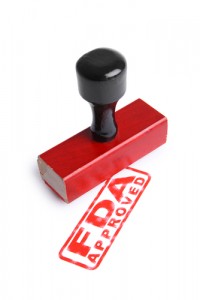 Yesterday, the U.S. Food and Drug Administration (FDA) approved Trulicity (dulaglutide) as a new treatment for Type 2 diabetes in adults. The treatment will consist of subcutaneous injection, once per week together with diet and exercise. Trulicity is a glucagon-like peptide-1 (GLP-1) receptor agonist, a hormone that helps to control the levels of glucose (sugar) in the blood.
Yesterday, the U.S. Food and Drug Administration (FDA) approved Trulicity (dulaglutide) as a new treatment for Type 2 diabetes in adults. The treatment will consist of subcutaneous injection, once per week together with diet and exercise. Trulicity is a glucagon-like peptide-1 (GLP-1) receptor agonist, a hormone that helps to control the levels of glucose (sugar) in the blood.
Type 2 diabetes affects approximately 26 million people, more than 90 percent of the total diabetic population in the United States. High levels of sugar in the blood for long periods can increase the probability of serious complications, such as heart disease, blindness, and nerve and kidney injury.
“Type 2 diabetes is a serious chronic condition that causes blood glucose levels to rise higher than normal,” said Mary Parks, M.D., deputy director of the Office of Drug Evaluation II in the FDA’s Center for Drug Evaluation and Research. “Trulicity is a new treatment option, which can be used alone or added to existing treatment regimens to control blood sugar levels in the overall management of type 2 diabetes,” added Mary Parks.
Trulicity is produced by Eli Lilly and Company, Indianapolis, were the company’s arm the Lilly Diabetes has been a global leader in diabetes care. The FDA is the governmental agency that assures the safety, effectiveness, and security of drugs, medical devices, biological products, foods, cosmetics, radiation-emitting electronic devices, and veterinary products.
 The safety and effectiveness of Trulicity was assessed in six clinical trials that included 3,342 patients with type 2 diabetes. During these studies, it was observed that Trulicity improved the patient’s blood glucose (sugar) assessed by reductions in HbA1c level (glycated hemoglobin, a measurement to evaluate the average blood glucose concentration). The regime studied for Trulicity has been in individual form and a combination therapy with other compounds also used for type 2 diabetes treatment that include metformin, sulfonylurea, thiazolidinedione, and prandial insulin. In clinical trials, the patients treated with Trulicity presented nausea, diarrhea, vomiting, abdominal pain, and decreased appetite as the most frequent side effects. Moreover, Trulicity should not be used in patients with several pathological conditions, such as type 1 diabetes, high levels of ketones in the blood or urine, named as diabetic ketoacidosis, severe gastrointestinal problems, as recommended therapy were diet and exercise can not be prescribed.
The safety and effectiveness of Trulicity was assessed in six clinical trials that included 3,342 patients with type 2 diabetes. During these studies, it was observed that Trulicity improved the patient’s blood glucose (sugar) assessed by reductions in HbA1c level (glycated hemoglobin, a measurement to evaluate the average blood glucose concentration). The regime studied for Trulicity has been in individual form and a combination therapy with other compounds also used for type 2 diabetes treatment that include metformin, sulfonylurea, thiazolidinedione, and prandial insulin. In clinical trials, the patients treated with Trulicity presented nausea, diarrhea, vomiting, abdominal pain, and decreased appetite as the most frequent side effects. Moreover, Trulicity should not be used in patients with several pathological conditions, such as type 1 diabetes, high levels of ketones in the blood or urine, named as diabetic ketoacidosis, severe gastrointestinal problems, as recommended therapy were diet and exercise can not be prescribed.
Importantly, mice treated with Trulicity developed tumors of the thyroid gland, known as thyroid C-cell tumors, which includes a type of thyroid cancer called medullary thyroid carcinoma (MTC). As a result, it is not known if Trulicity will cause these types of tumors in humans. Thus, Trulicity should not be given to patients with a personal or family history of MTC or with multiple endocrine neoplasia syndrome type 2, tumors of the endocrine system, which predispose patients to MTC.
The FDA approved Trulicity with a Risk Evaluation and Mitigation Strategy (REMS), a plan to provide information to health care professionals of important risks associated with Trulicity and assuring its safe use.
Notably, Trulicity has to go through a series of post-marketing studies in order to assess actual efficacy and safety in other clinical and experimental settings, a, FDA requirement. These studies will consist of a clinical trial with pediatric patients to evaluate dosing, efficacy, and safety of Trulicity; a study to assess its potential biological effects on sexual maturation, reproduction, and central nervous system (CNS) development and function in young rats; in performing a longitudinal study for 15 years to evaluate if Trulicity will increase MTC incidence in patients; a clinical trial comparing Trulicity with insulin glargine on glycemic control in patients with type 2 diabetes and moderate or severe renal impairment; and a clinical trial to evaluate the cardiovascular risk of Trulicity in patients with high probability of cardiovascular disease.


